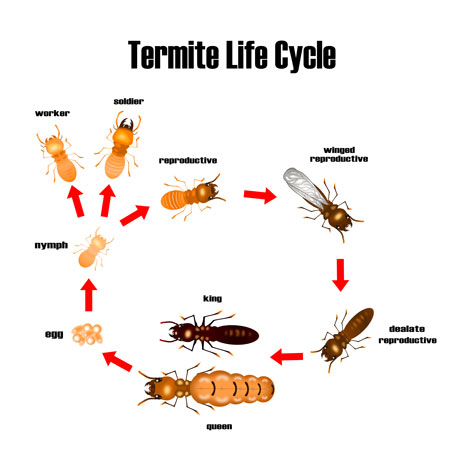Call: +2347084421068
Termites
These pests are often found in warm and humid environments.
Common Name: Termites
Scientific Name: Order Isoptera
Termites are social insects that belong to the order Isoptera. They are small, pale-colored insects with soft bodies. Termites live in large colonies and are known for their destructive feeding habits, as they primarily feed on wood and other cellulose-based materials. These pests are often found in warm and humid environments, and they play a vital role in breaking down dead plant material in nature.

- TYPES OF TERMITES
- Subterranean Termites: These termites build their colonies in soil and construct intricate tunnel systems to reach their food sources. They require moisture to survive and are commonly found in basements, crawl spaces, and around wooden structures.
- Drywood Termites: Drywood termites infest dry wood, such as furniture, framing, and wooden structures. They do not require direct contact with soil and can survive solely on the moisture content of the wood they consume.
- Dampwood Termites: Dampwood termites thrive in high-moisture areas, such as decaying logs, tree stumps, and damp wood structures. They rely on wood with high moisture content for their sustenance.
SIGNS OF INFESTATION
- Presence of Wings: Discarded wings near windowsills, doorways, or light sources may indicate the presence of termite swarmers.
- Mud Tubes: Subterranean termites build mud tubes along walls, foundations, or crawl spaces to protect their foraging routes.
- Damaged Wood: Hollowed or damaged wood that appears layered or crumbles easily is a common sign of termite activity.
- Frass: Termite droppings, known as frass, resemble small wood-colored pellets and can be found near termite nests or infested wood.
PREVENTION AND CONTROL
- Moisture Control: Repair leaking pipes, ensure proper drainage, and eliminate moisture sources to discourage termite infestations.
- Regular Inspections: Conduct periodic inspections for termite activity in vulnerable areas, such as basements, crawl spaces, and wooden structures.
- Remove Wood-to-Soil Contact: Prevent direct contact between soil and wooden structures by using concrete or metal barriers.
- Termite-Resistant Construction: Utilize termite-resistant materials and techniques during construction or renovation projects.
- Professional Treatment: In the case of an infestation, consult a professional pest control service for effective termite eradication and control measures.
